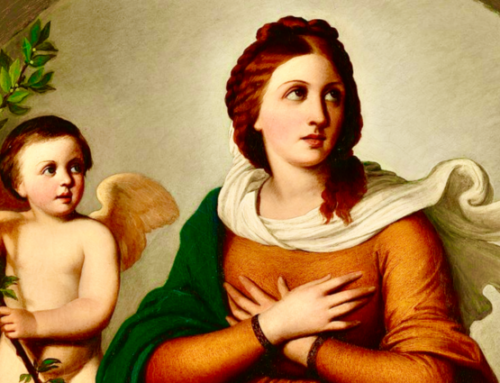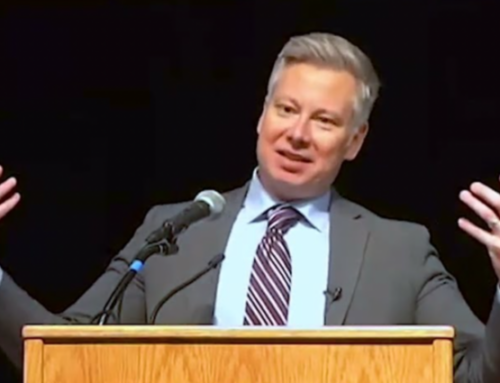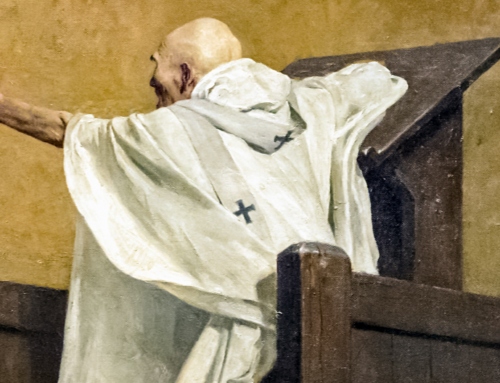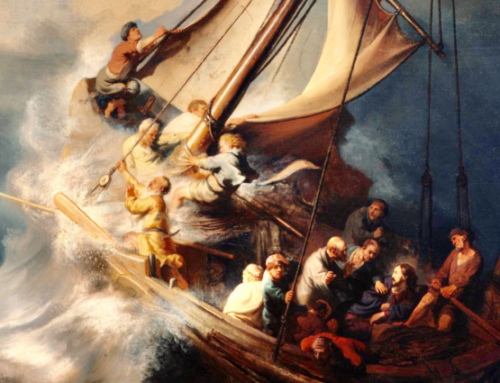In “My Name is Lazarus,” a collection of thirty-four essays by thirty-four Chesterton-influenced converts, Dale Ahlquist presents us with a compelling anthology of personal redemption stories. Each tells a story that hits home—probably because each tells a story of coming home.
My Name is Lazarus: 34 Stories of Converts Whose Path to Rome Was Paved by G.K. Chesterton, by Dale Ahlquist (349 pages, ACS Books, 2018)
 On the day that he was received into the Catholic Church G.K. Chesterton wrote a short poem simply titled, “The Convert.” Its second and final stanza ended with these two lines:
On the day that he was received into the Catholic Church G.K. Chesterton wrote a short poem simply titled, “The Convert.” Its second and final stanza ended with these two lines:
And all these things are less than dust to me
Because my name is Lazarus and I live.
In this volume we have thirty-four conversion stories, edited by Dale Ahlquist, president of the American Chesterton Society, who is himself a convert and one of the thirty-four new “Lazaruses” in this collection.
The link among the thirty-four essayists is not just that they followed G.K. Chesterton into the Catholic Church, but that they were led into the Church by their encounter with Mr. Chesterton.
A few began their encounter with Chesterton in college and entered the Church before graduating. Some began their encounter much later and took much longer to convert. Some took nearly as long, if not longer, than Chesterton himself. (He was forty-eight when the “chief event” of his life took place in a tin shed where he was baptized by Father John O’Connor, the priestly model for Chesterton’s Father Brown.) No matter the length of time, the common thread is that each of the thirty-four was in some way brought to the Church by reading G.K. Chesterton.
That certainly is a thread, but is it a compelling one? Let’s see now. . . thirty-four readers picked up a copy of Chesterton’s Orthodoxy and read it in one gulp or in small snatches. Perhaps each then tackled his masterpiece, The Everlasting Man. And then that was that. Well, maybe not quite. Maybe things were nailed down by inhaling one of his biographies, probably of St. Francis or perhaps St. Thomas. If not, maybe it took The Catholic Church and Conversion to put the finishing touch on the process.
But really now, thirty-four stories of reading the same few Chesterton books… could that possibly be compelling? Thirty-four essays that amount to reading about reading. Is there anything that could possibly make for duller reading than that?
No doubt there is, but this collection of essays isn’t it. It isn’t even close to it. In fact, it’s all quite compelling in its own various ways.
To be sure, it is the case that more than a few of the thirty-four confess that they read their way into the Catholic Church. Actually, most tell us that they read a good deal more than Chesterton, even if Chesterton was the key to their conversion. But none of these essayists would have us believe that his story is solely about reading. For that matter, few, if any, of the thirty-four believe that theirs is ultimately a story about reading.
What we have here are thirty-four very different stories about thirty-four very different lives. We also have thirty-four wonderful essays. Some are more wonderful than others. Some are simply full of wonder. (And as Chesterton tells us, the world doesn’t want for a lack of wonders, but for a lack of wonder.) A few are wonderfully profound. A few are wonderfully whacky. And a few are wonderfully quirky, even downright funny (while being serious as well; after all, Chesterton reminds us that the opposite of funny is not serious—no, the opposite of funny is not funny). But each in its own way is a story that hits home, because each is a story of coming home.
Two of the essayists are well-known to readers of this journal. They would be Joseph Pearce and Father Dwight Longenecker. One is well known—period. He would be Peter Kreeft, Boston College philosophy professor, a convert from Calvinism to Catholicism while still an undergraduate at Calvin College, and the author of as nearly as many books as Chesterton. (Like Chesterton, Dr. Kreeft can be wonderfully self-deprecating. When asked to write a book on suffering, he told the publisher that C.S. Lewis had already written the best one on the subject and that he couldn’t approach it. Their response was to tell him they needed a “second rate book on suffering.” Only then did he agree to their request. After all, “a book for simpletons should be written by one.”)
A few of the essayists are now priests, and one is a bishop. A few are professors, but most are something else. While on the subject of something else, it could probably go without saying (but won’t!) that each is a former “something-else,” whether that be a former pagan, a former Marxist, a former Lutheran, a former Unitarian (like Chesterton, who would later be a former Anglican, and admittedly a “bad Anglican”), a former Moslem, or a former Baptist (Mr. Ahlquist). In fact, more than a few are like Chesterton himself, meaning two or more are former “something-elses.”
None is formally—or formerly—a revert to the Catholic Church. That is to say, none tells a story that could be this reviewer’s story; namely, that of a faithful cradle Catholic, who fell away from the Church in high school or college or later, only to return to the Church at some even later point (with more than a little help from a fellow by the name of Chesterton).
In other words, these are all stories of people who grew up either ignorant of the Church, or aware but indifferent to the Church, or aware but hostile to the Church. Despite these differences, there does remain this additional common thread: Each was not just a serious reader, but a serious searcher. None of the above was ever satisfied with being a “none.” (Not that there are no searchers to be found among today’s secular “nones,” but that too many seem satisfied with being a “none.”)
The other common thread to be found in this collection is an oft-repeated play on the pattern that Chesterton detailed in The Catholic Church and Conversion. For him (and for at least thirty-four others) there were essentially three stages prior to conversion: 1) one’s willingness to be fair to the Church; 2) one’s discovery of the Church and its history, traditions, and rituals (a discovery that is not really complete until conversion, when one realizes, as Chesterton did, that the Church is larger on the inside than the outside); and 3) one’s attempt to run away from the Church.
But don’t run away from this book. It’s not just full of great stories, but chock full of wonderfully different stories, stories written by readers who understand that books are important to our lives, but far from the only things in our lives.
The Imaginative Conservative applies the principle of appreciation to the discussion of culture and politics—we approach dialogue with magnanimity rather than with mere civility. Will you help us remain a refreshing oasis in the increasingly contentious arena of modern discourse? Please consider donating now.
Editor’s Note: The featured image is “The Resurrection of Lazarus” (1857) by Léon Bonnat (1833-1922), courtesy of Wikimedia Commons.







A delightful review of a delightful read, of which I was delighted to be a part! And what a very Chestertonian approach — sometimes you have to look at a thing from 34 different angles in order to be able to see it!